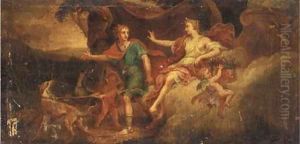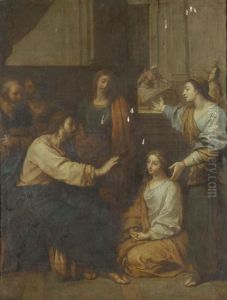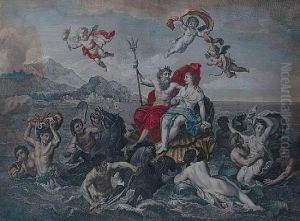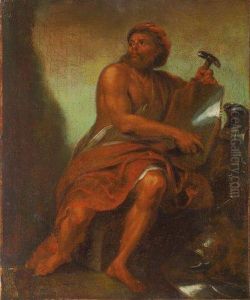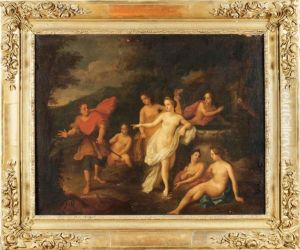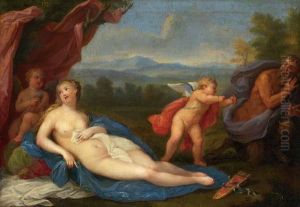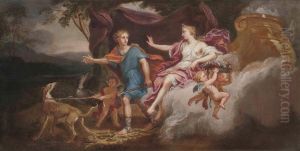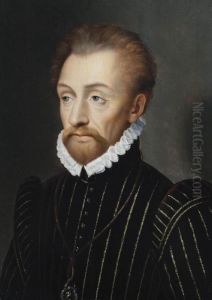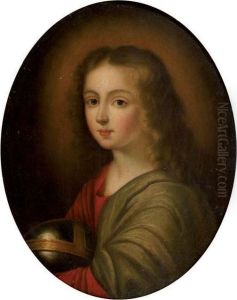Louis De Boullogne II Paintings
Louis de Boullogne II, also known as Louis Boullogne the Younger, was born on November 19, 1654, in Paris, France. He descended from a family deeply entrenched in the arts; his father, Louis Boullogne the Elder, and his mother, Marie-Anne de La Tour, were both painters, and his siblings also pursued careers in painting. This nurturing environment undoubtedly influenced Louis II's development as an artist.
Louis II proved to be a gifted artist and was admitted to the Royal Academy of Painting and Sculpture in Paris at a young age. He received his training under the guidance of his father and other prominent artists of the time, such as Bon Boullogne. His early works were noted for their classical themes, often drawn from mythology or religion, and executed with a skillful command of the painterly techniques of the era.
In 1677, Boullogne won the coveted Prix de Rome, a scholarship that allowed him to study at the French Academy in Rome, which was a significant achievement for artists of that period. His time in Italy had a profound influence on his work, as he was exposed to the masterpieces of the Renaissance and the emerging Baroque style. Upon his return to France, his reputation as a talented painter continued to grow.
Louis de Boullogne II's career flourished when he became a member of the Royal Academy in 1681. He was appointed as a professor at the Academy in 1702 and later became its director. His influence extended beyond his own work as he played a pivotal role in the training and development of the next generation of French artists.
Throughout his life, Boullogne completed numerous commissions for religious institutions and for the royal court. He was known for his large-scale history paintings, with their dynamic compositions and rich color palettes. His work can be characterized by a blend of academic tradition and the grandeur of the Baroque style.
Louis de Boullogne II died on November 2, 1733, in Paris. His legacy continued through the students he taught and through his family, as his nephews and nieces, who were also accomplished artists, continued the Boullogne artistic tradition. Today, his works are housed in various museums and collections around the world, serving as testament to his skill and his contribution to the French classical art tradition.
